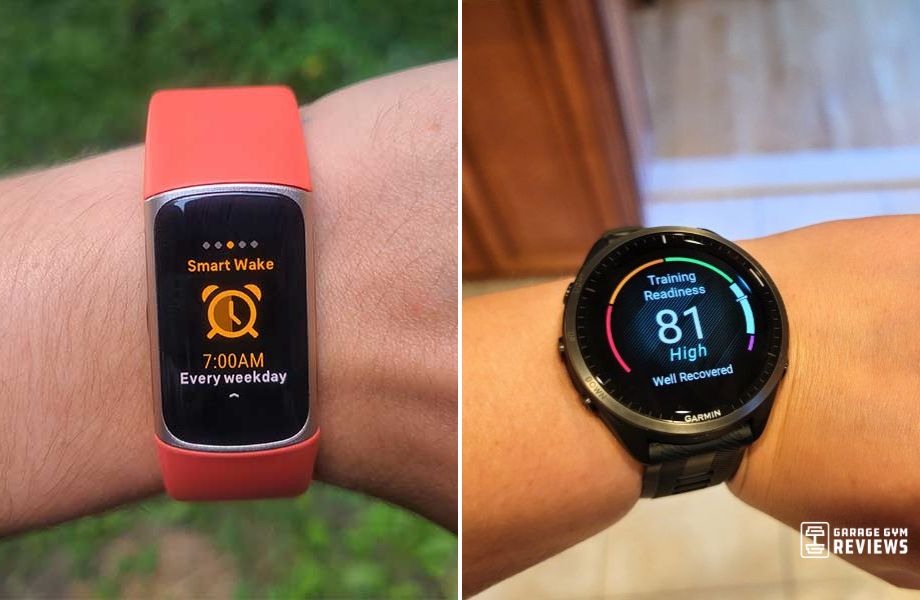We test and review fitness products based on an independent, multi-point methodology. If you use our links to purchase something, we may earn a commission. Read our disclosures.
The best fitness trackers do more than tell you how many calories you burned or how many steps you took in a day. They can tell you how well you’re sleeping, alert you when your body is under a lot of stress, and provide insights about your heart health. A research study published in August 20221 showed that fitness trackers can even provide accountability and encourage you to be more physically active.
Two of the most popular fitness tracker brands are Fitbit and Garmin. Each company’s wearable devices offer smartwatch features like email and text notifications and provide health insights like heart rate monitoring and sleep tracking. While there are many similarities between them, there are also a lot of important differences.
I previously owned two Fitbits and the Garmin Venu, and I now wear a Garmin Forerunner 965. My husband was a Fitbit loyalist for years before switching to Garmin a few months ago. We both prefer our Garmin devices. But personal opinions aside, who would win in a Fitbit vs Garmin debate? Below, we’ll tell you everything you need to know about these two giants in the wearable technology world.
Comparison Chart: Fitbit vs Garmin
There are several smartwatches within the Fitbit and Garmin ecosystems. The simpler models track basic health metrics, while the more advanced versions offer more insights about your body than you ever thought possible.
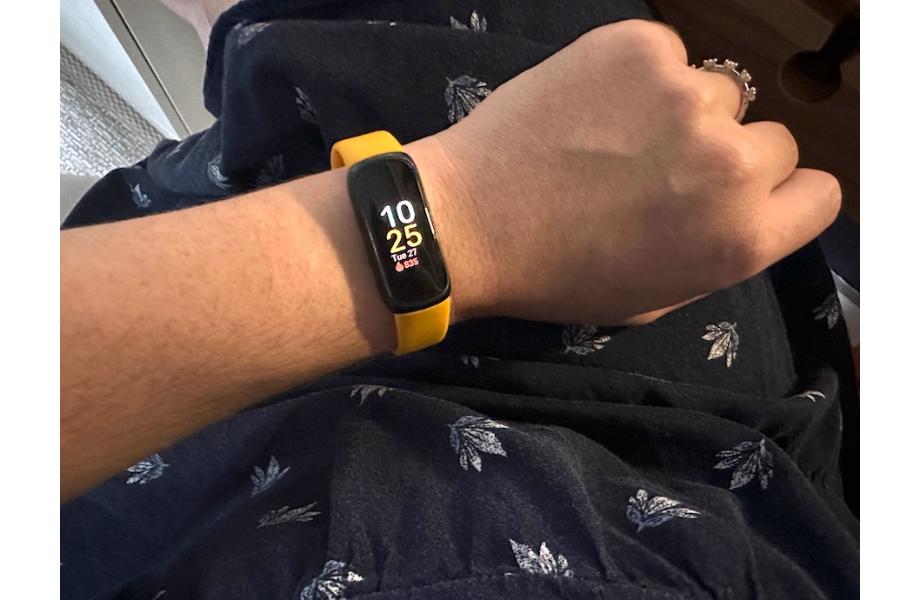
Still, in general, even Garmin’s basic smartwatches tend to be more robust than Fitbit’s. That means Garmin watches are often more expensive. But with the higher price tag, you also get a longer battery life. Some Garmin devices have a battery life of over three weeks, depending on your settings and how often you use functions like the built-in GPS.
For this comparison chart, I’ll provide specs for the Charge 6, the latest model in Fitbit’s lineup, and the Forerunner 965, one of Garmin’s most powerful running watches (which you can also read more about in our Garmin Forerunner 965 review).
| Fitbit Charge 6 | Garmin Forerunner 965 | |
| Price | $159.95 | $599.99 |
| Size | 1.45″ L x .91″ W x .44″ H | 47.2 mm x 47.2 mm x 13.2 mm |
| Battery life | Up to 7 days | Up to 23 days |
| Display size | 1.4” | 1.4″ (35.4 mm) diameter |
| Display type | AMOLED display | AMOLED display |
| Water resistance | Water resistant to 50 m | Withstands pressure equivalent to a depth of 50 m |
| Metrics tracked | Heart rate, GPS, steps taken, sleep score, menstrual symptoms, calories burned, active zone minutes, and many more | Heart rate, GPS, menstrual cycle tracking, blood oxygen, stress levels, steps taken, calories burned, body battery, training readiness, VO2 max, sleep stages, and many more |
| Activities tracked | HIIT, spinning, rowing, running, kickboxing, canoeing, plus 30+ additional activities | HIIT, running (outdoor, track, and treadmill), walking, indoor rowing, cycling (indoor and outdoor), elliptical, yoga, Pilates, hiking, and many more |
| Connectivity | GPS, Bluetooth, ANT+, Wi-Fi | GPS, Bluetooth, ANT+, Wi-Fi |
Quick Look: Fitbit vs Garmin
Garmin began as a GPS navigation company in 1989 and started making fitness trackers and sports watches in 2003. Since then, the brand has grown a large and loyal following, including runners, triathletes, hikers, swimmers, and outdoor enthusiasts. Some of the best Garmin fitness trackers include the Forerunner 265 and Forerunner 965, two popular running watches, and the Venu Sq 2, a lifestyle watch intended to compete with the Apple Watch.
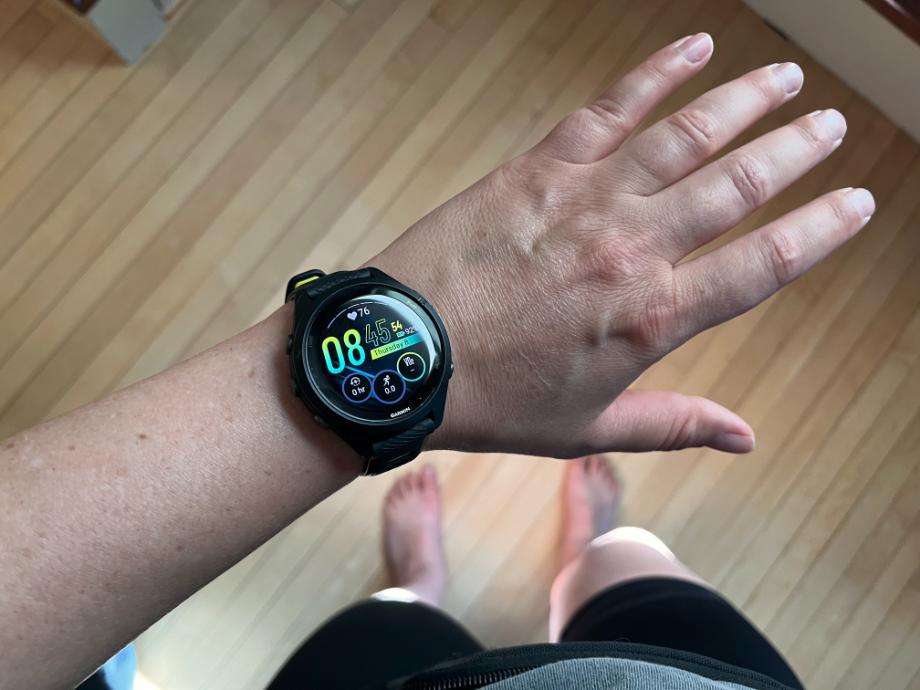
All of Garmin’s watches are compatible with the free Garmin Connect app. Depending on which watch you have, the app can provide details about your workout performance, sleep quality, stress levels, resting heart rate, hydration, menstrual cycles, and more. You can even sync the app to a smart scale and monitor changes in your body weight and body fat percentage over time.
Fitbit launched in 2007 with pedometers people could attach to their clothing to track their steps. They started selling wearable technology in 2013. While the initial wearables tracked steps and some basic metrics like calories burned, they didn’t have a watch face. The brand’s latest products offer the same smartwatch features as items like the Apple Watch or Samsung Galaxy watch. They also offer more options for tracking different types of activities and provide more insights into users’ health and wellness.
Like Garmin, Fitbit has a mobile app, although you have to pay around $10 per month for access to the most detailed health tracking information. The app’s free version tracks data like resting heart rate, skin temperature, SpO2 (the percentage of oxygen in your blood), and menstrual health symptoms. The premium version offers a more detailed look at how things like sleep quality and the intensity of your workouts impact your body.
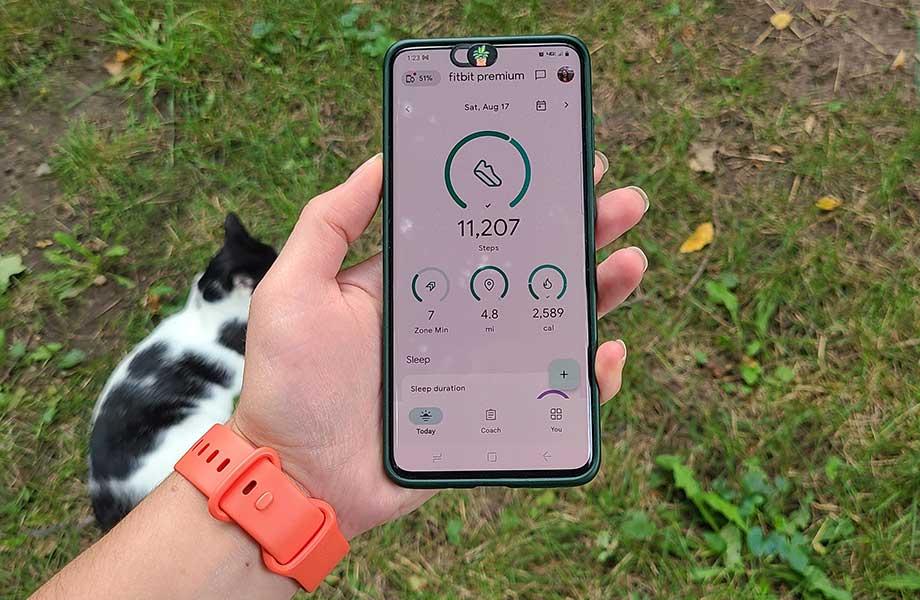
Additionally, Fitbit offers an ECG app that’s compatible with the Fitbit Charge 5, Charge 6, and other recent models. This app can check for changes in your heart’s rhythm and alert you to potential atrial fibrillation (Afib). Garmin offers a similar ECP app that’s compatible with a limited number of devices, like the Garmin Venu 3, Garmin fenix 8, and epix Pro (Gen 2).
RELATED: Fitbit Aria Air Review
Who Should Buy Fitbit
Fitbit devices offer a wealth of information about your health and wellness. However, compared to other options, they’re not the most comprehensive. Still, there’s definitely a market for them. Based on our experience testing several fitness trackers over the past few months, here’s who we think Fitbit watches are good for:
- Beginners who are just starting to dive into the world of fitness trackers and smartwatches
- People who want a more stylish and discreet smartwatch
- People who don’t want to spend a ton of money on a wearable device
- Folks who don’t mind paying for an app for the most detailed health insights
RELATED: Best Fitbit
Who Should Buy Garmin
I’m quite familiar with Garmin products, as I had the original Venu for four years and now own the Forerunner 965. While I’ve loved both watches, I also recognize that Garmin is better suited for specific populations. Those include:
- Runners, triathletes, and other serious athletes who need advanced health and fitness tracking
- People who travel or are on the go a lot and want a watch with a long battery life
- Folks who don’t mind watches with a sportier, more casual aesthetic
Key Similarities Between Fitbit and Garmin
- Both companies have mobile apps that sync with their fitness trackers. The Fitbit app is simply called Fitbit, and the Garmin app is called Garmin Connect.
- Fitbit and Garmin both track metrics such as step count, skin temperature, menstrual health symptoms, and stress levels.
- With watches from either brand, you can configure the watch face to show exactly the data you want.
- Fitbit and Garmin watches are compatible with iPhones and Android phones and can provide email, text, and phone notifications.
- Garmin and Fitbit devices can sync with third-party apps like Strava, Spotify, and Apple Health.
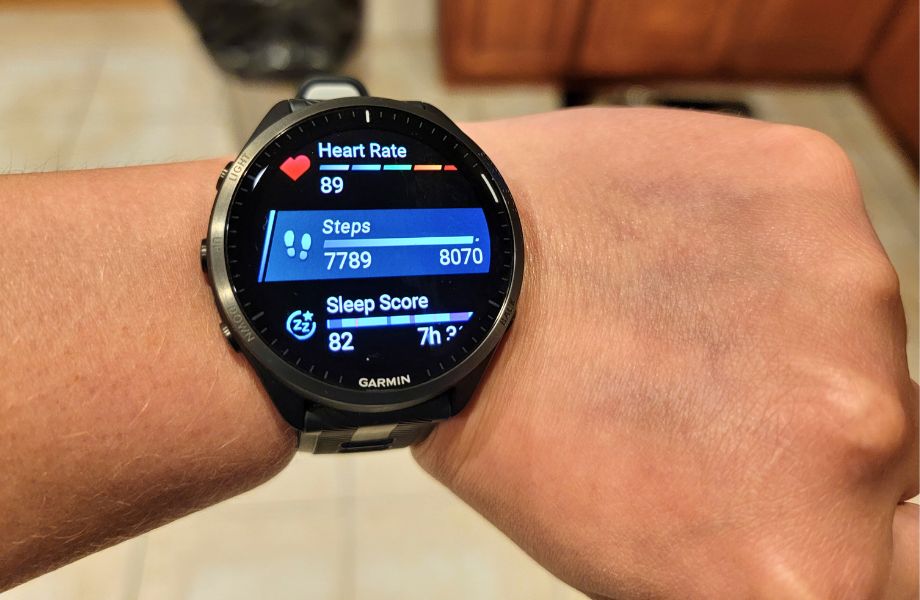
Important Differences Between Fitbit and Garmin
- You have to pay for Fitbit Premium to access Fitbit’s advanced tracking features, such as a daily readiness score and a detailed sleep report. Equivalent metrics from Garmin, like your training readiness score, are free in Garmin Connect. (Note, however, that the exact metrics you get with your Garmin fitness watch will depend on the model you have.)
- Garmin’s battery life is typically much higher than Fitbit’s. The Garmin fenix 7 Pro, for example, can last up to 37 days on a single charge. The Fitbit Inspire 3 offers the longest battery life of all the Fitbit models, but it still only lasts up to 10 days.
- Most Fitbit smartwatches have sleeker, more discreet designs. Garmin does sell lifestyle watches that look more like traditional watches, but their sports watches are bulkier and more rugged.
- Garmin watches are often more expensive. The ones with the most advanced health tracking features can range in price from around $250 to $900 or more. Meanwhile, Fitbit watches top out at around $250.
- With Garmin, you get access to various training programs for 5ks, 10ks, and half-marathons, plus road cycling or mountain biking races. Fitbit offers guided workouts but doesn’t provide structured workout plans.
- In my experience, Garmin watches are much more durable. I had two Fitbit watches several years ago, and they both stopped working after about a year and a half. My husband had a similar experience with the three Fitbit watches he’s owned. I had the original Garmin Venu for four years, and it still worked like new when I replaced it.
RELATED: Couch to 5k Planning
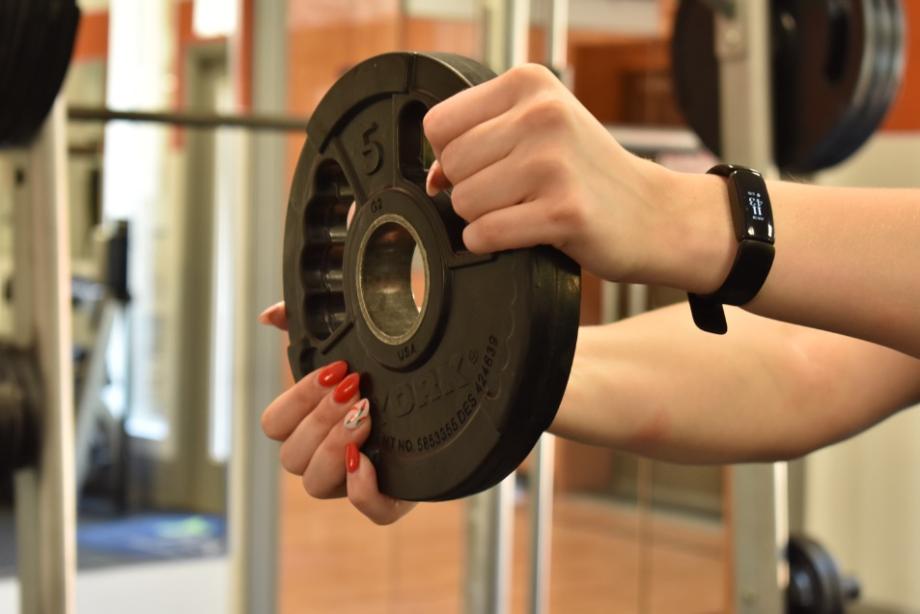
Fitbit vs Garmin: Final Thoughts
If I had to choose between Garmin vs Fitbit, I would choose Garmin. Their watches are more expensive, but they last longer. As someone who works in the fitness industry and takes their training pretty seriously, I also like that Garmin offers more robust fitness and health tracking. Their excellent battery life, clear and bright displays, and durability are other nice perks.
However, Garmin watches aren’t for everyone. For people who don’t need a device that offers a super granular look at their health and wellness, most Fitbit watches are sufficient. They offer heart rate monitoring, some simple data points about your sleep quality, and can be more affordable. They also track various cardio workouts and physical activities, which should be more than enough for casual exercisers.
Fitbit vs Garmin: FAQs
Are Garmins better than Fitbit?
Garmin watches do tend to offer more advanced health-tracking capabilities than Fitbit devices. In my experience, Garmin devices are also more durable and have a much longer battery life. However, if you don’t need advanced fitness features in your smartwatch, the Fitbit Versa 4, Fitbit Sense 2, or any other Fitbit wearable will be sufficient.
What is the best Garmin to replace a Fitbit?
The Garmin Venu Sq 2 is a great alternative to Fitbit, especially if you’re transitioning from the Versa 3 or Versa 4. The Venu Sq 2 looks similar to the Fitbit Versa 3 and 4 but has a better battery life. According to some customers, the Venu Sq 2 also has more accurate built-in GPS technology, which is important if you’ll be adventuring outdoors frequently.
Is Garmin a good fitness tracker?
Yes, the Garmin Vivosmart 5, Garmin Vivoactive 5, Garmin Forerunner 265, and other Garmin watches are excellent fitness trackers. They measure metrics such as body battery, heart rate, and VO2 max, and offer insights into your sleep quality, stress levels, menstrual cycles, blood oxygen levels, and more. For athletes or anyone who takes their workouts seriously, most Garmin watches can also track dozens of activity types and have built-in GPS for outdoor activities.
References
- Ferguson, T., Olds, T., Curtis, R., Blake, H., Crozier, A. J., Dankiw, K., Dumuid, D., Kasai, D., O’Connor, E., Virgara, R., & Maher, C. (2022). Effectiveness of wearable activity trackers to increase physical activity and improve health: a systematic review of systematic reviews and meta-analyses. The Lancet. Digital health, 4(8), e615–e626. https://doi.org/10.1016/S2589-7500(22)00111-X
Further reading

In our ProForm 905 CST Treadmill review, we take a look at the specs of this now-discontinued treadmill. Read more

Is running on a treadmill barefoot safe? Here, we dive into the pros and cons of doing so. Read more

The Eleiko Öppen Deadlift Baris a trap bar that utilizes an open-ended concept, barbell handles, and a built-in jack to create the best trap bar we have tested. Although expensive, the Öppen Deadlift Bar is an extremely useful and innovative specialty bar that we recommend to anyone with a desire for the best and doesn't mind paying for it. Read more

The Rogue Monster Utility Bench 2.0 is the best flat weight bench that Rogue Fitness sells, but not the one we most recommend. We believe this bench is incredibly sturdy, overbuilt, and strong, however, we do believe there are better value options available. We do recommend the Monster Utility Bench 2.0, but only to those with deep pockets and a desire for things that are Made in the USA and top of the line. Read more

